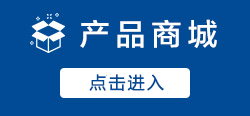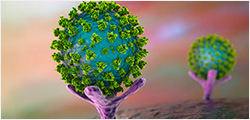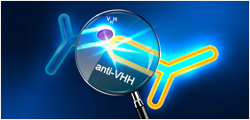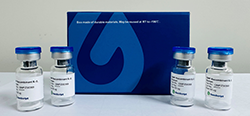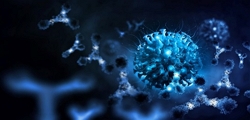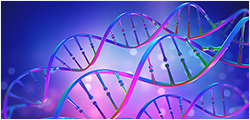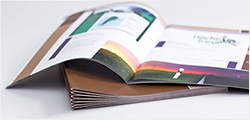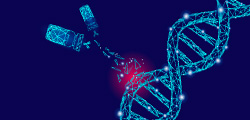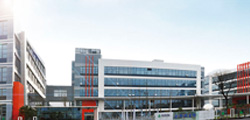

Figure 1.
Purification of
DYKDDDDK‐tagged protein from E. coli lysate
Lanes:
1. Whole cell lysate
2. Flow through
3. Protein marker
4‐8. Eluate of target DYKDDDDK‐tagged protein (M.W. 60.4 kDa)

Figure 2.
Purification of N‐ terminus and Cterminus
DYKDDDDK ‐tagged
proteins
Lanes:
1‐2.Eluate of N‐terminus DYKDDDDKtagged protein (M.W. 19.2 kDa)
3. Protein marker
4‐5. Eluate of C‐terminus DYKDDDDKtagged protein (M.W. 26.4 kDa)

Figure 3.
Purification of
DYKDDDDK‐tagged protein from mammalian cells
Lanes:
1. Protein marker
2. Supernatant from cultured CHO cells
3. Flow through after binding
4. Eluate of target DYKDDDDK ‐tagged protein (M.W. 27.6 kDa)

Figure 4.
Purification of
DYKDDDDK‐tagged glycoprotein from mammalian cells
The upper figure shows SDS‐PAGE analysis result and the lower figure shows Western blot result.
Lanes:
1. Protein marker
2. Supernatant from CHO cells expressing target glycoprotein
3. Flow through after binding
4. Eluate of target DYKDDDDK‐tagged protein (M.W. 50.0 kDa)

Figure 5.
Purification of
DYKDDDDK‐tagged proteins using different elution methods.
Lanes:
1. Protein #1 (M.W. 16.8 kDa) by competitive elution using 300 μg/ml DYKDDDDK peptide.
2. Protein #2 (M.W. 54.6 kDa) by neutral elution with 3M NaCl
3. Protein #3 (M.W. 27.6 kDa) by acid elution, pH 3.5
4. Protein #1 (M.W. 16.8 kDa) by alkaline elution, pH 10.5
5. Protein #1 (M.W. 16.8 kDa) by alkaline elution, pH 12

Figure 6.
Benchmark with
Sigma‐Aldrich’s
ANTI‐FLAG M2
Affinity Gel
Side‐by‐side comparison of DYKDDDDKtagged protein purification with GenScript’s Anti‐DYKDDDDK G1 Affinity
Resin and Sigma‐Aldrich’s ANTI‐FLAG M2 Affinity Gel, from same staring material following manufacturer suggested procedures.
Lanes:
1. Protein marker
2. Purification from M2 gel (pH 3.5 elution)
3. Purification from G1 resin (pH 12.0 elution)
Anti-DYKDDDDK G1 Affinity Resin
| L00432 | |
|
|
|
| ¥2810 | |
|
|
|
|
|
|
| 163am银河线路娱乐官网 | |









